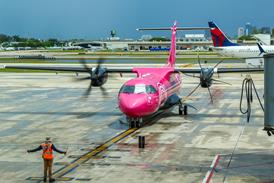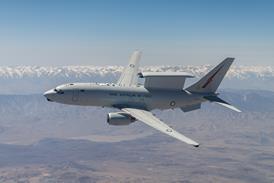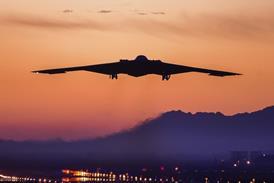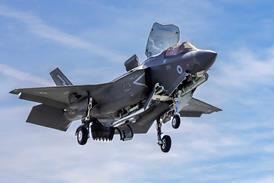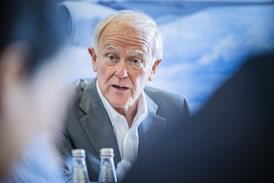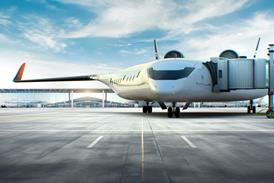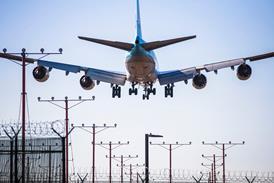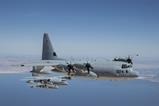The US Army has completed the first hover test with a new GE Aerospace turboshaft engine meant to power its Sikorsky UH-60 Black Hawk and Boeing AH-64 Apache helicopters.
The service’s head of aviation procurement confirmed the milestone on 15 May at the annual Army Aviation Association of America conference in Nashville, Tennessee.
“This week the aircraft was ready to fly and we were able to come to a hover,” says Brigadier General David Phillips, the army’s programme executive officer for aviation.
Sikorsky has been working for several months to integrate two GE Aerospace T901 engines onto a UH-60M at the company’s flight development centre in West Palm Beach, Florida. Ground testing on the new powerplant began in January.
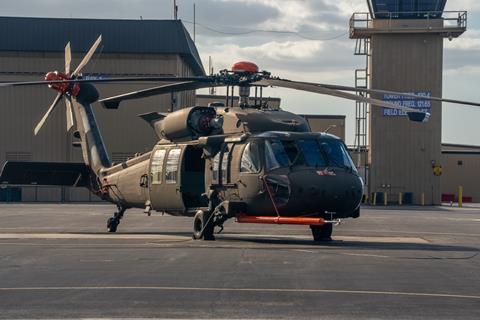
Sikorsky had previously completed T901 ground runs using the company’s Raider X prototype – the compound coaxial design competing for the Future Attack Reconnaissance Aircraft programme that was cancelled in 2024. The T901 was also intended to power that armed scout platform.
The recent hover test with a UH-60M marks the first time the T901 has propelled a rotorcraft into lift. Engine maker GE also confirms the milestone.
“GE Aerospace’s T901 engines successfully powered a US Army Black Hawk flight for the first time this week and demonstrated the performance needed to deliver critical war fighting capabilities to the US military to keep us ahead of our adversaries,” the company says.
GE spent years developing the T901 under the Improved Turbine Engine Program (ITEP), first winning the contract in 2019 and then battling through significant schedule delays and cost overruns as disruptions from the Covid-19 pandemic buffeted the aerospace manufacturing industry.
Just as the engine programme appeared to be on solid footing, the T901’s fate has once again been thrown into uncertainty. An army-wide cost cutting initiative has identified a number of aviation projects for elimination, including the ITEP, as the Trump Administration looks to shake-up modernisation priorities within the Pentagon.
“We have no procurement dollars as it relates to the ITEP,” says army vice chief of staff General James Mingus.
What is now in question, the four-star general says, is whether to continue testing and developing the T901 without certainty of fielding the new turboshaft.
“Just like the Black Hawk, the Apache is going to be around for a while,” Mingus notes. “Is it going to need an improved engine? Or can we just continue to modify the one that it has?”
Current plans call for the army to operate UH-60s and AH-64s as far out as 2070, alongside the forthcoming fleet of Bell MV-75 Future Long-Range Assault Aircraft tiltrotors and the latest Block II configuration of the Boeing CH-47F Chinook heavy-lift twin-rotor.
With such a long service life ahead, some overhaul to rotary-wing propulsion seems likely, at least eventually.
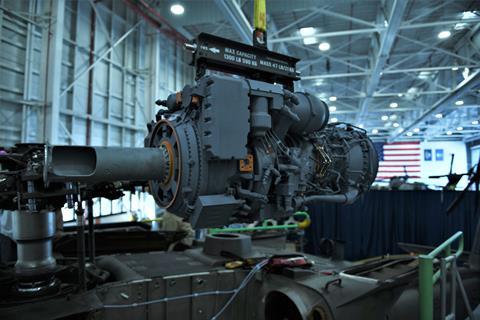
However, army officials note that the T901 is not the only update option. The army’s special operations aviation regiment operates its unique MH-60 Black Hawks with the GE Aerospace YT706, which offers 30% more power than the standard T700 turboshaft, according to GE.
The T901 would increase performance further, providing 3,000shp (2,240kW) – 50% more than the UH-60’s currently available power, while also improving fuel efficiency. The existing T700 powerplant offers 2,000shp.
Current development funding for the T901 project covers flight testing, which Sikorsky says remains on track. After that, the engine’s future becomes murky.
“We’re looking at the path ahead in real time,” says Phillips.
The one-star general notes the army has spent several years performing standalone engine testing on the T901, prior to recent ground and hover trials onboard a Black Hawk.
“We’ve had engines on test stands now for several years, gathering low-altitude, high-altitude, low-performance and high performance data,” he says. “All of that data is very rich, and informing the path.”
If the army opts not to pursue T901 procurement, Phillips says it is possible another US military service or overseas partner could pick it up instead.
Those discussions are ongoing, as is analysis by the Pentagon into how spending cuts will ripple out through the army aviation fleet.




